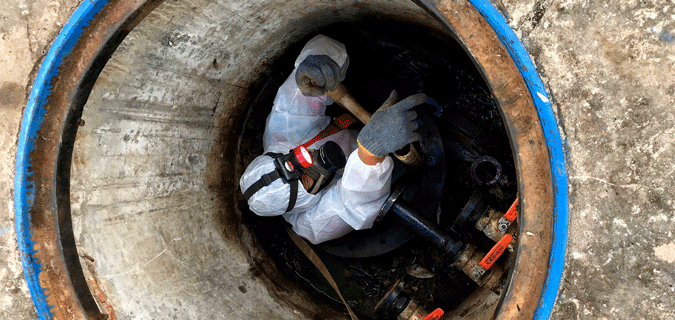
As every confined space is different, rescue teams that are required to operate within them must be skilled and prepared to handle the most complex and challenging situations that they might encounter. Continuous training is the only thing that ensures that the rescuers remain equipped with all sorts of techniques and skills to accomplish the mission successfully every time.
Also, confined spaces present numerous hazards to the people who enter them. They often have limited access points, are poorly ventilated and the presence of toxic gasses is often an issue. Because the hazards of any particular space may not be known until a rescue team has entered it, specialized skills are, hence, needed to enter confined spaces in Canada and ensure that rescue operations can be conducted safely and efficiently.
Benefits of continuous training for confined space rescue teams
Regular training offers a number of benefits to rescue teams who operate within confined spaces in Canada. It mainly helps in maintaining their alertness, mobility and overall safety. Let’s discover the other advantages continuous training has to offer.
1. Stay up to date with the latest safety protocols
Regular training is essential for rescue teams to remain up to date with the latest methods, and strategies for rescuing people from confined spaces in Canada, as well as the equipment that they will need to use. Safety protocols and laws relating to confined spaces are updated reasonably regularly, so routine training ensures that all rescue team members are aware of the latest guidance.
2. Practical experience
Simulated rescue situations offer rescue teams the opportunity to practise their skills in a controlled environment that closely replicates a scenario that they are likely to encounter. Repeated exposure to a range of rescue situations enables the team to hone their communication skills, develop excellent team cohesion, apply different problem-solving methodologies and make effective decisions. The more that these skills are practised, the more likely a rescue team is to achieve a successful outcome in a real-life situation.
3. Practice makes perfect
By regularly practising the correct skills, and using the rescue equipment in the correct manner, good habits are formed, which will then be employed instinctively in an emergency situation. When all team members are prepared for the situations that they encounter and work effectively together as a team, the likelihood of mistakes occurring is drastically reduced, with a correlating improvement in safety.
4. Teamwork makes the dream work
A newly established rescue team may struggle to communicate or understand the boundaries of each person’s role and responsibilities. Continuous training allows team members to develop a deep understanding of each person’s role, strengths and weaknesses. By collaborating in several simulated rescues, they can establish effective streams of communication and work cohesively when presented with a real emergency.
5. Continuous improvement
Learning from experience is vital, and when rescue teams learn from simulated rescues, they are able to evaluate their performance fairly, identifying areas for improvement without worrying about whether their actions or inactions contributed to the outcome of a real emergency situation. Providing the opportunity for learning from experience after every training session is vital to debrief all team members, sharing insights and developing the skills that are needed for the team to operate effectively as a unit.
In conclusion, continuous training allows confined space rescue teams to hone their skills and improve the likelihood of a successful outcome.